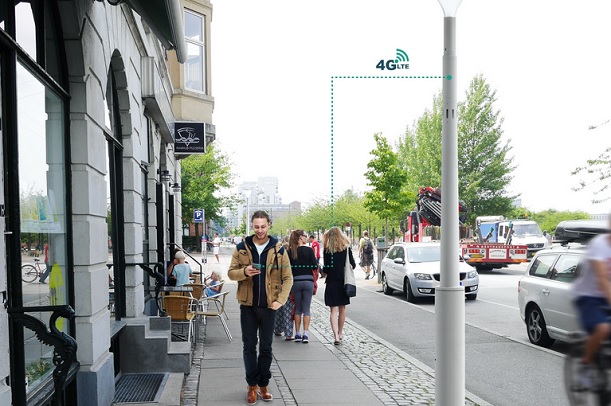Philips Lighting and Ericsson have teamed up to boost mobile broadband coverage in Europe with the launch of a new 4G-connected streetlight.
The Philips lightpole site slim, which includes energy-efficient LED lighting and remote management capabilities, is designed to resemble an ordinary streetlight but has built-in small cell technology.
The first deployment is now active in Barcelona ahead of next week’s Mobile World Congress.
The two companies worked together to co-develop integrated antennae in the lightpoles in order to make the solution as compact as possible. The unit is available in a range of styles and sizes with the ability to place lights at different points on the pole according to the illumination pattern required.
Operators will be able to rent space within the lightpoles in order to boost their coverage without having to navigate planning restrictions and costs.
Nishant Batra, Head of Network Infrastructure Products at Ericsson said: “Philips lightpole site, with fully integrated Ericsson small cells, enables mobile operators to deploy dozens or hundreds of cell sites quickly and easily, making it possible to upgrade large areas with minimal disruption while delivering superior outdoor connectivity and app coverage to their subscribers.”
Christoph Herzig, Head of Venture at Philips Lighting, added: “The digital transformation of public spaces is accelerating rapidly – from historic town centres to neighbourhoods to large urban areas. Today’s civic leaders want to meet the needs of the people they serve by creating connected, protected environments that are smart and efficient today, and that take advantage of all emerging technologies in the future.
“Street lighting has the potential to become a ubiquitous, high-performing wireless network that is essential for any city’s digital transformation. Think of it as digital real estate that can be rented out.”
The launch of the new unit follows the partnership announced by the two companies at Mobile World Congress in 2014 to jointly address sustainability and coverage problems through street lighting.
According to ABI Research, sales of outdoor small cells will grow by an average of 38 percent each year through to 2021 as operators invest in densifying their networks.
Read more: Three UK dips its toe into small cells, but wants more action from wider ecosystem


